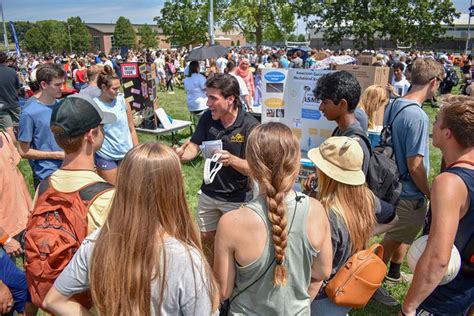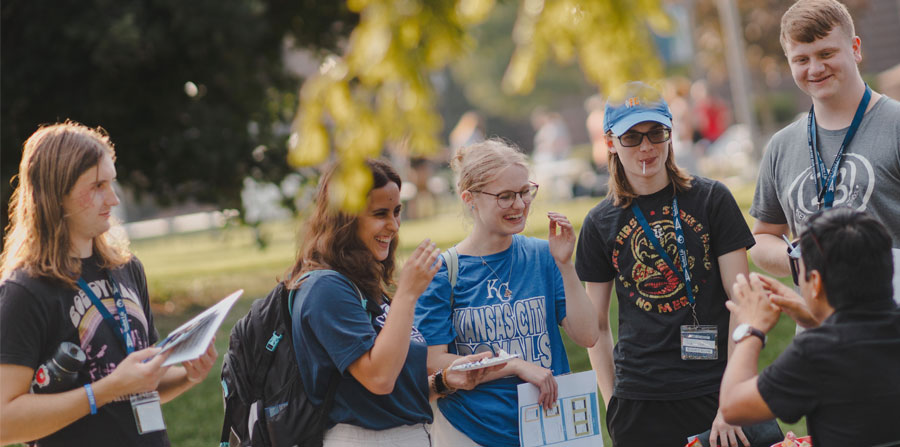Residential rehabilitation programs for youth play a crucial role in helping young individuals overcome challenges such as addiction, behavioral issues, and mental health struggles. These programs offer a structured environment where youth can receive professional support, guidance, and therapy tailored to their unique needs. In recent years, innovative trends have emerged, enhancing the effectiveness and success rates of these interventions. This article explores the latest trends in youth rehabilitation, success stories from various programs, and the innovative approaches shaping the future of rehabilitation. By examining case studies, challenges, and solutions, we aim to provide insights into how these programs are evolving to meet the needs of today’s youth.
Discover more about this topic with ujiyor.net in detail.
1. Overview of Residential Rehabilitation Programs for Youth
Residential rehabilitation programs for youth offer comprehensive care and support to young people struggling with substance abuse, behavioral disorders, or mental health challenges. These programs provide a live-in setting where youth can concentrate on healing and recovery in a safe, structured environment. Their primary goal is to offer therapeutic interventions, counseling, and skill-building activities, helping youth reintegrate into society in a healthier and more positive manner.
Rehabilitation centers for youth typically employ a multidisciplinary approach, bringing together medical professionals, therapists, educators, and counselors. Program durations vary, ranging from short-term stays of a few weeks to long-term care lasting several months, depending on the severity of the young person’s condition. Many residential programs emphasize family involvement, recognizing the vital role a supportive home environment plays in lasting recovery. Through holistic treatment plans, these programs aim to address the root causes of the youth’s challenges, equipping them with the skills and resilience necessary for a brighter future.

2. Latest Trends in Youth Rehabilitation
The landscape of youth rehabilitation programs is shifting toward a more individualized and holistic approach. Many centers are embracing trauma-informed care, recognizing the profound impact of past trauma on a young person’s behavior and mental well-being. This approach prioritizes tailoring therapeutic interventions to address specific emotional and psychological wounds, ensuring that treatment is uniquely suited to the individual’s needs.
Furthermore, rehabilitation is embracing technological advancements, utilizing virtual therapy sessions and mobile apps to offer ongoing support outside of residential settings. Programs are also incorporating creative therapies, such as art, music, and outdoor activities, providing opportunities for youth to express themselves and develop coping mechanisms in innovative ways.
Family-based approaches are becoming increasingly popular, emphasizing the involvement of parents and caregivers in the recovery process. This fosters a supportive home environment, crucial for long-term success. Another emerging trend is the use of peer mentorship, where young people who have successfully completed rehabilitation guide others through the process, fostering community and mutual support.

3. Success Rates and Outcomes of Various Programs
The effectiveness of youth rehabilitation programs is influenced by a variety of factors, including the program’s methodology, the specific needs of the participants, and the level of support provided after completion. Programs that prioritize holistic and individualized treatment plans, tailored to address each individual’s unique psychological, emotional, and social needs, demonstrate higher success rates. Research indicates that programs incorporating trauma-informed care, family engagement, and creative therapies achieve better long-term results, with many participants demonstrating sustained recovery and improved mental well-being.
The duration of these programs is a key determinant of their effectiveness. Long-term interventions, generally lasting six months or longer, tend to exhibit higher success rates than shorter programs. This is because they offer young people ample time to cultivate coping strategies, mend relationships, and tackle the root causes of their challenges.
Peer support and mentorship programs play a crucial role in achieving positive outcomes for youth, fostering motivation and a sense of belonging among those who share similar experiences. While setbacks are possible, youth involved in structured aftercare programs, like ongoing counseling or peer support groups, demonstrate lower relapse rates. This underscores the vital importance of continuous care in facilitating successful rehabilitation outcomes.

4. Innovative Approaches in Rehabilitation
Youth rehabilitation is undergoing a revolution, moving away from outdated methods and embracing innovative approaches that cater to the individual needs of young people. One such innovation, trauma-informed care, recognizes the profound influence of past trauma on a young person’s behavior and mental well-being. By acknowledging these experiences, therapists can develop tailored treatment plans that build trust and promote healing.
Technology is revolutionizing rehabilitation, especially for young people. Virtual therapy, mobile health apps, and online support communities offer continuous connection with counselors and peers even after residential programs end. This ongoing support helps prevent relapse by providing a sense of care and accountability. Telehealth options also increase access to therapy for those in remote areas or with limited transportation, expanding the reach of rehabilitation services.
Creative therapies represent a significant advancement in youth development. Programs utilizing art, music, equine therapy, and adventure-based activities offer an alternative approach for young people to explore their emotions and develop coping mechanisms. These activities foster self-expression, confidence, and resilience.
Family-based interventions are gaining popularity. These programs emphasize the involvement of parents and caregivers in therapy, equipping them with the skills to create a supportive home environment. This approach fosters stronger family bonds, improves communication, and encourages a united front in the recovery process, ultimately leading to more lasting positive outcomes for young people.
5. Case Studies and Personal Success Stories
The impact of residential rehabilitation programs for youth is powerfully illustrated through case studies and personal success stories. One such story involves Mia, a 16-year-old who faced challenges with substance abuse and anxiety. Upon enrolling in a trauma-informed rehabilitation program that incorporated art therapy and family counseling, Mia was able to confront her underlying emotional distress and mend her relationship with her parents. Today, she lives a life free from substance use and is pursuing her artistic passion.
Another example comes from a program that utilizes peer mentorship. Josh, a young man who had successfully completed his rehabilitation journey, returned to the program to mentor others. His firsthand experience and guidance provided invaluable support, fostering a sense of understanding and community among the participants.
These success stories underscore the efficacy of personalized, holistic approaches. They demonstrate that by addressing not only the immediate challenges faced by youth, but also nurturing their long-term emotional and social well-being, programs can greatly increase the likelihood of recovery and personal development.
6. Challenges and Solutions in Youth Rehabilitation
Youth rehabilitation programs face numerous obstacles that can impede the effectiveness of treatment and long-term recovery. A major challenge lies in tackling the complex underlying mental health issues, such as anxiety, depression, or trauma, which frequently contribute to substance abuse or behavioral problems. Many programs struggle to provide sufficient mental health resources to adequately address the diverse needs of the youth under their care.
A significant obstacle to seeking help is the stigma surrounding addiction recovery. Young people often feel embarrassed or hesitant to enroll in rehabilitation programs, fearing disapproval from their peers or families. This societal prejudice can delay treatment, hindering their access to the vital early intervention they require.
Furthermore, the shift from a structured living environment to daily life can be challenging. Without adequate aftercare and ongoing support, many young people are at risk of reverting to their previous behaviors, as they find it difficult to utilize the skills they acquired in real-world scenarios.
Addressing these challenges requires a multi-faceted approach. Programs are increasingly incorporating mental health professionals, offering trauma-informed care, and utilizing creative therapies to engage youth more effectively. Educating families and communities about the significance of rehabilitation can help diminish stigma, encouraging more young people to seek help. Finally, structured aftercare, including counseling and peer support, is crucial for sustaining the progress made during rehabilitation, enabling youth to successfully reintegrate into their communities.
7. Future Directions and Developments in Residential Rehabilitation Programs
The future of residential rehabilitation programs for youth is poised for significant evolution, driven by advancements in technology and a growing focus on personalized care. One promising avenue is the integration of artificial intelligence and data analytics to create more tailored treatment plans. By analyzing individual data, these technologies can help predict outcomes and adjust interventions in real time, leading to a more effective rehabilitation experience.
A significant trend involves the growing integration of mental health support within traditional rehabilitation services. This means programs are anticipated to increasingly incorporate comprehensive mental health care, encompassing trauma-focused therapies and neurofeedback, to more effectively address intricate emotional and psychological needs.
In addition, community-based and hybrid models, blending residential treatment with outpatient support, are anticipated to gain wider adoption. These models strive to create a seamless continuum of care, offering assistance to youth both while they are in residential programs and after their transition back into the community.
Engaging families and equipping them with the resources to support their loved ones’ recovery will remain a top priority. New programs will develop innovative strategies to empower families and provide them with the tools they need. These advancements are designed to create more flexible, inclusive, and impactful rehabilitation solutions for young people.
In conclusion, residential rehabilitation programs for youth are evolving to better address the diverse needs of young individuals facing significant challenges. With innovative approaches such as trauma-informed care, technology integration, and creative therapies, these programs are increasingly effective in fostering long-term recovery. Success stories and advancements highlight the positive impact of personalized, holistic treatment. As we look to the future, continued focus on comprehensive care, family involvement, and community-based support will be crucial in enhancing the success and sustainability of youth rehabilitation programs.
ujiyor.net

